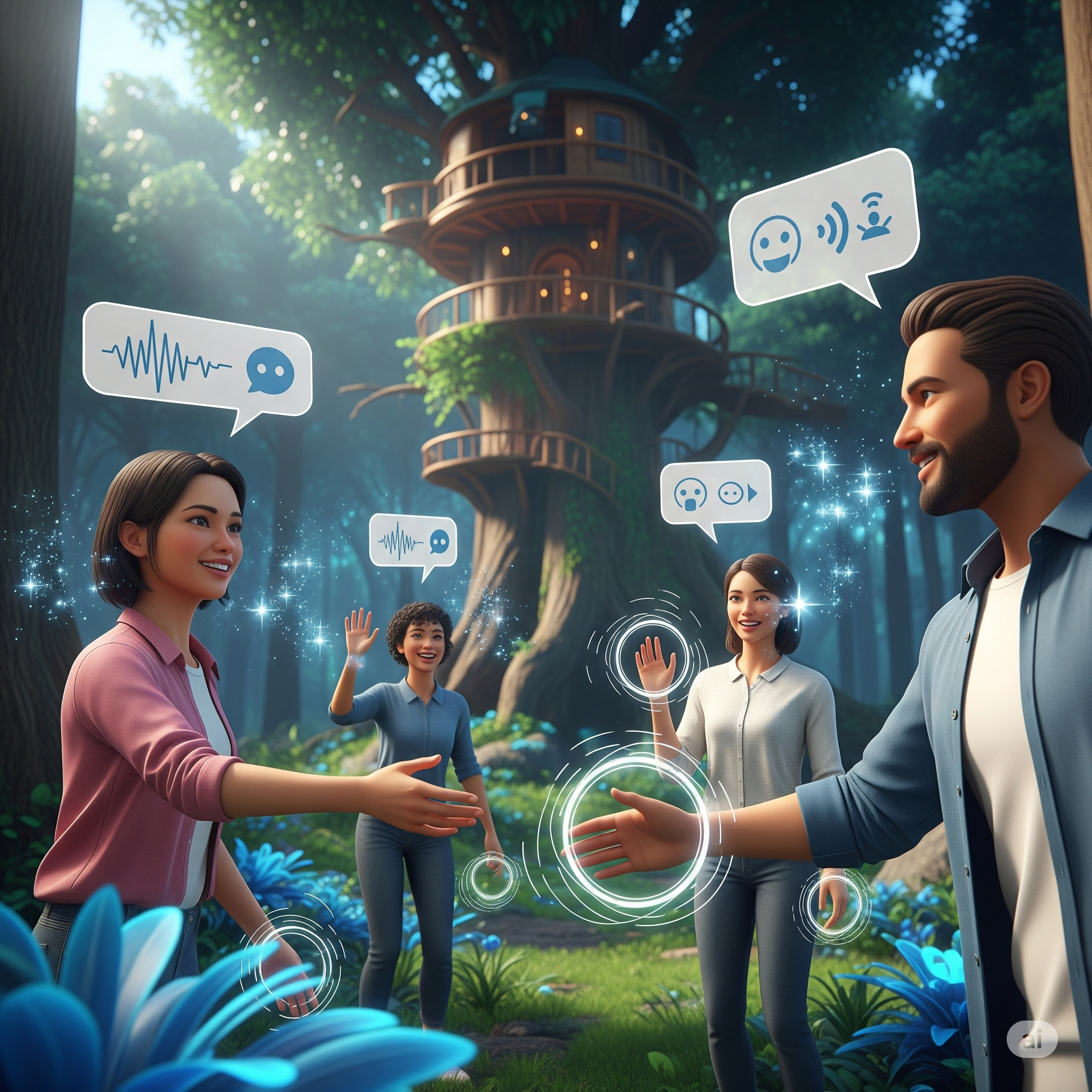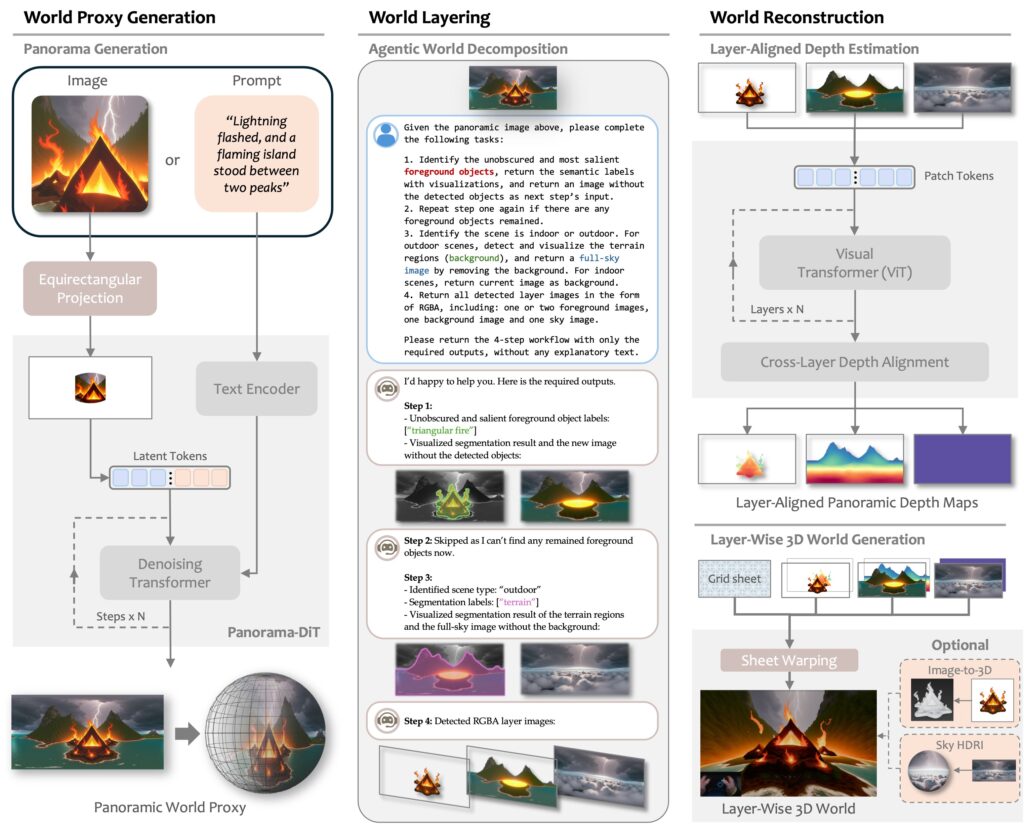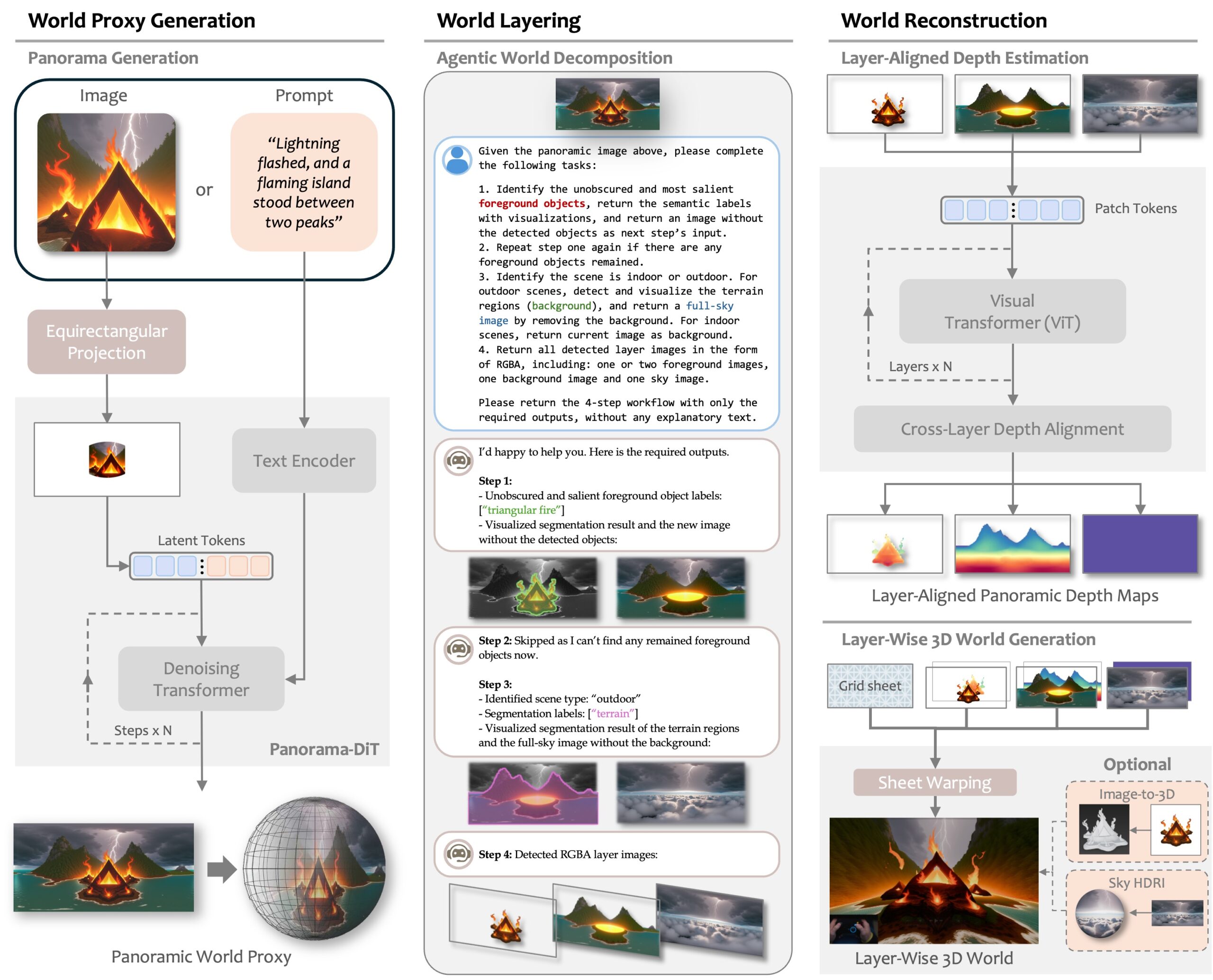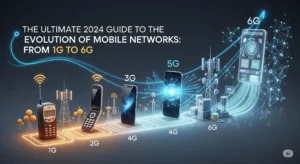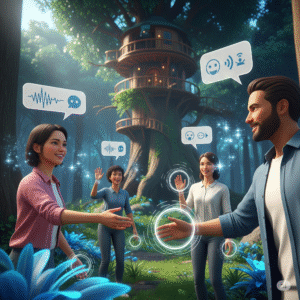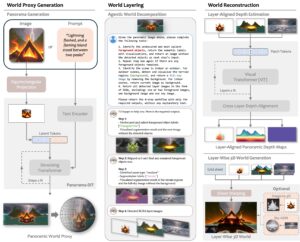Social VR: Virtual Hangouts, Collaboration & Future Interaction
Social VR: Virtual Hangouts, Collaboration & Future Interaction
I. Introduction
Imagine slipping on a headset and instantly being surrounded by friends from around the world—not just in a chat room, but in a fully immersive 3D world where everyone has a tangible presence, gestures, and a voice. This is Social Virtual Reality (Social VR): a transformative blend of digital presence and genuine connection.
Thank you for reading this post, don't forget to subscribe!Why It Matters Today
In an era defined by remote work, digital communities, and global communication, Social VR offers something truly unique: the profound feeling of “being there” without physical presence. From virtual concerts and immersive office meetings to groundbreaking weddings and therapeutic support groups, Social VR is profoundly reshaping how we interact—creating spaces that mimic and even transcend real-world interaction.
II. The Evolution of Social Virtual Reality
A minimalist timeline showing digital interaction evolution: a text chat bubble for the 1990s, a blocky 3D avatar for the 2010s, and a realistic VR avatar for Today, on a dark background with neon lines.
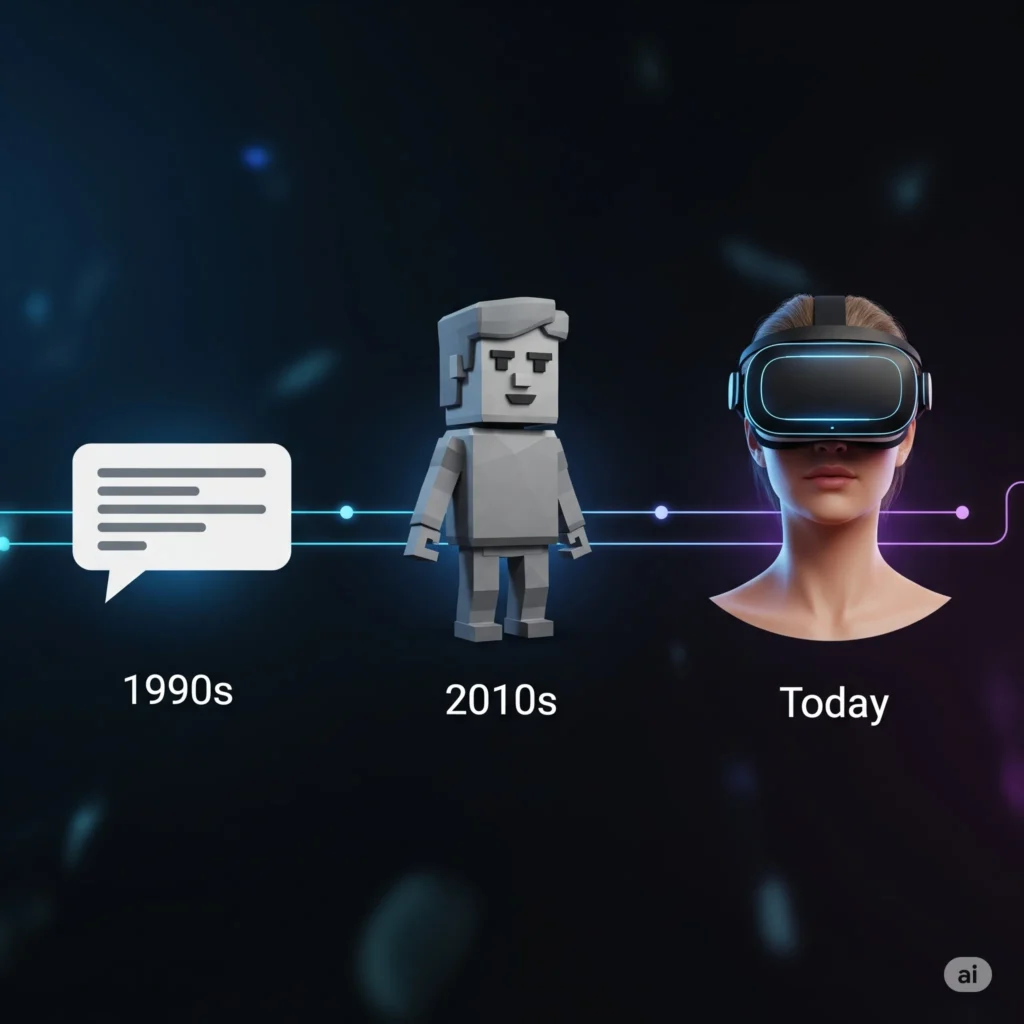
From Chatrooms to Full-Body Avatars
- 1990s–2000s: Text-based MUDs (Multi-User Dungeons) and 2D worlds like Second Life.
- 2010s: Early VR prototypes (e.g., AltspaceVR) with basic avatars.
- Today: Photorealistic avatars with eye/face tracking (e.g., Meta Horizon, Apple Vision Pro), haptic suits, and full-body motion capture.
Key Technological Enablers
These advancements collectively fuel the critical sense of “presence”—the feeling of truly inhabiting a virtual space:
- VR Headsets (Meta Quest 3, Apple Vision Pro, HTC Vive): High-res displays + inside-out tracking.
- Haptic Feedback (bHaptics vests, Teslasuit): Physical touch sensations for handshakes, impacts, or virtual objects.
- Spatial Audio: Sound that shifts as you move (e.g., whispers behind you).
- Cloud Streaming + 5G: Enables complex worlds without $2,000 gaming PCs.
“Presence isn’t just visual—it’s the chill you feel when a friend ‘taps’ your virtual shoulder.”
III. Popular Social VR Platforms
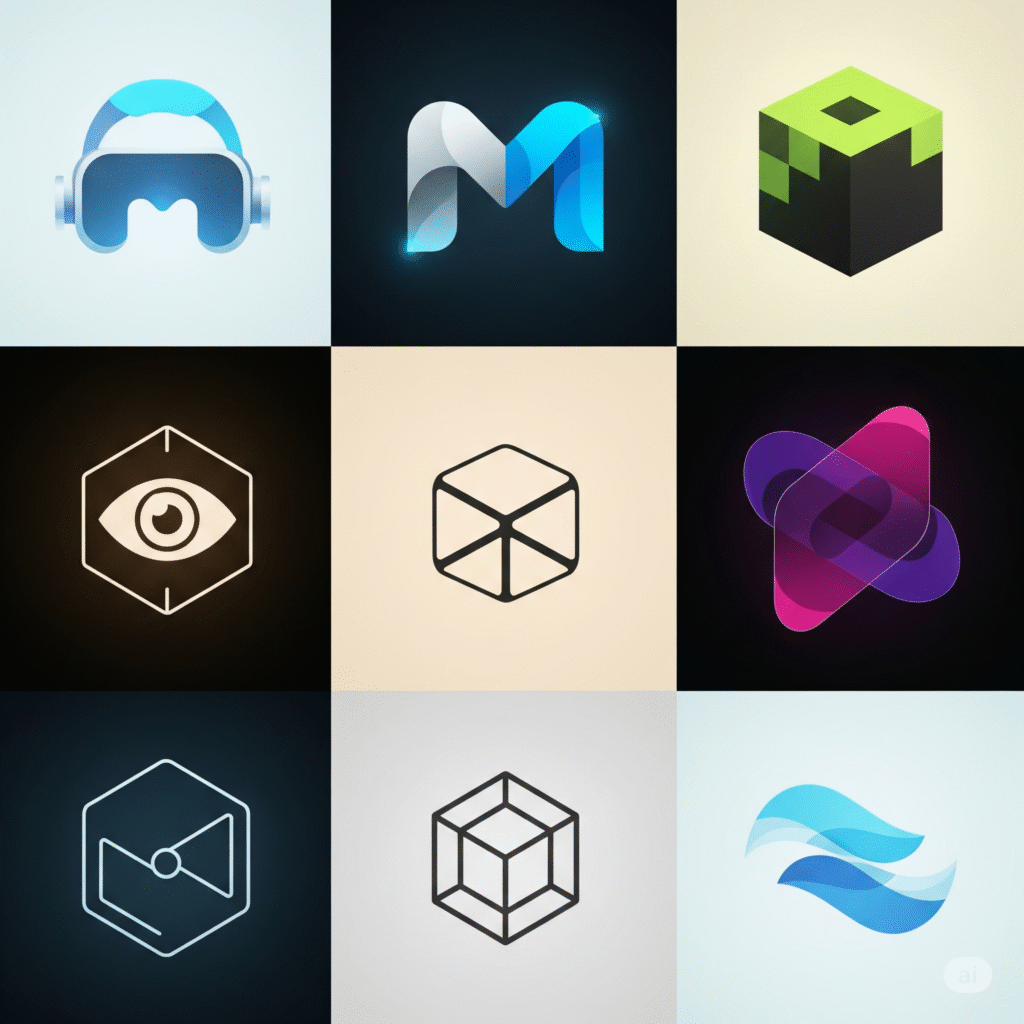
| Platform | Best For | Key Feature |
|---|---|---|
| Meta Horizon | Events, Hangouts | Cross-platform (Quest/PC/Mobile) |
| VRChat | Creativity, Gaming | User-generated worlds (20M+ users) |
| Rec Room | Families, Games | Junior accounts + safety controls |
| spatial | Work, Galleries | 3D whiteboarding + NFT displays |
| Engage | Education, Enterprise | NASA collaborations, university labs |
IV. Virtual Hangouts: Redefining How We Socialize
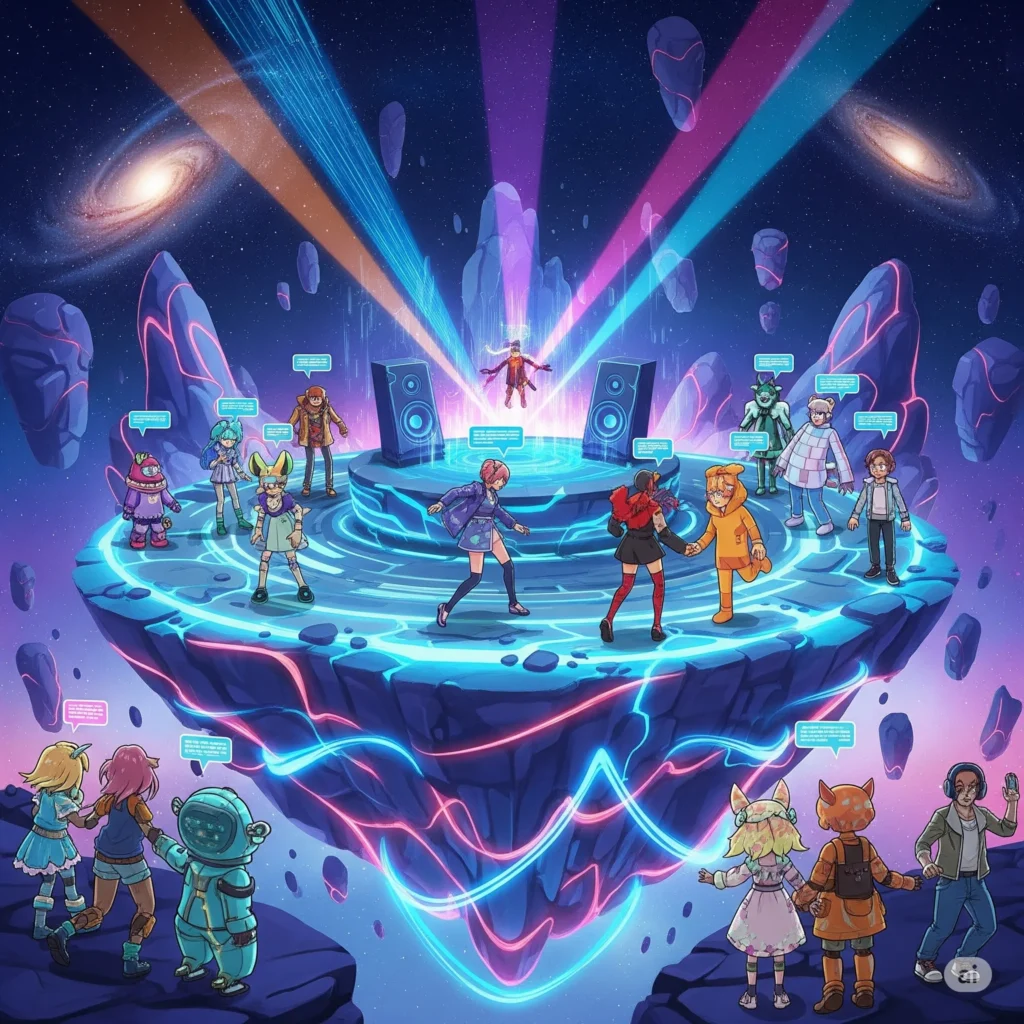
Events Without Borders
- Music: Travis Scott’s Fortnite concert (12M+ live attendees).
- Art: VR galleries like Museum of Other Realities.
- Community: Book clubs in cozy virtual lodges.
Case Study: A Wedding in VR
When travel bans halted a couple’s plans, 80 guests gathered in Virbela’s tropical island venue. Avatars danced, threw digital rice, and toasted—proving emotional resonance needs no physical venue.
Mental Health: The Double-Edged Sword
- ✅ Benefits:
- Lifeline for isolated seniors (e.g., Rendever retirement communities).
- Exposure therapy for social anxiety (Stanford VR studies).
- Safe LGBTQ+ support groups (Rec Room private worlds).
- ⚠️ Risks:
- Over-immersion blurring reality (set time limits!).
- Harassment amplified by spatial presence (e.g., virtual “groping”).
- Identity dissociation after prolonged avatar use.
***Crucial:*** *Professional guidance + platform moderation tools (e.g., personal bubbles, instant muting).*
V. Virtual Collaboration: The New Frontier of Remote Work
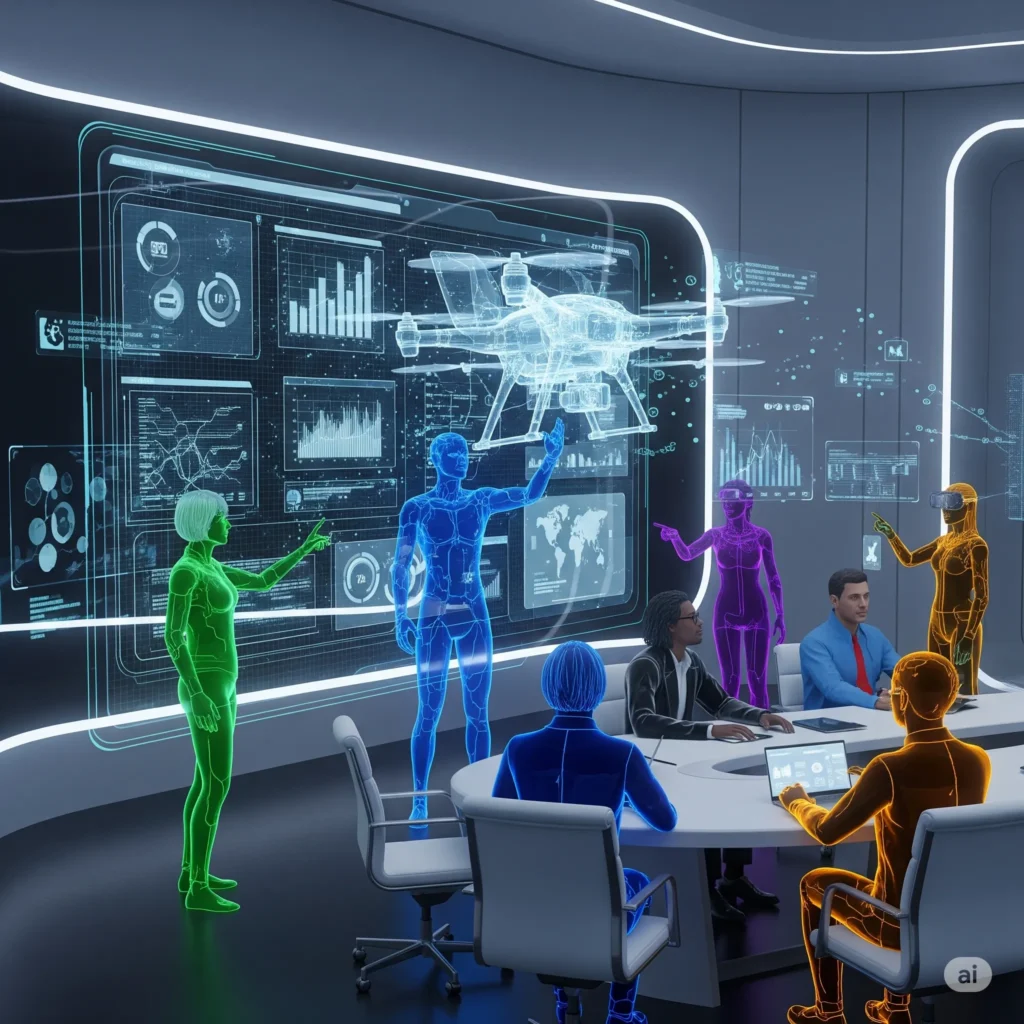
Why Teams Are Turning to VR
Spatial audio and shared 3D spaces make brainstorming feel natural—no more awkward Zoom silences. Benefits:
- 40% faster decision-making (Stanford study).
- Non-verbal cues (avatar gestures > static video).
- “Magic whiteboards” that scale to skyscraper size.
Where It Shines
- Design & Engineering:
- Tearing apart car engines in Gravity Sketch.
- Real-time CAD model tweaks with global teams.
- Architecture (AEC):
- Virtual walkthroughs spotting clashes pre-construction.
- Clients “standing” on the 50th floor of unbuilt towers.
- Creative Brainstorming:
- 3D mood boards in Spatial (drag images from web → VR).
Tools Leading the Charge
- Microsoft Mesh (Teams VR integration).
- Meta Horizon Workrooms (whiteboarding + keyboard tracking).
- NVIDIA Omniverse (photorealistic industrial sims).
VI. Education & Training in Social VR
Learning Goes 3D

- Medical: Surgeons practice on holographic organs (Osso VR).
- History: Walking through Ancient Rome with classmates.
- Language: Conversing with AI avatars in ImmerseMe cafes.
Proven Impact
- 76% higher retention vs. video lectures (PwC study).
- Hazardous job training (e.g., electrical grid repairs) with zero real-world risk.
VII. Challenges and Ethical Concerns
A visual representation of digital privacy concerns in virtual reality, with user identity and data shown in a state of fragmentation and vulnerability.
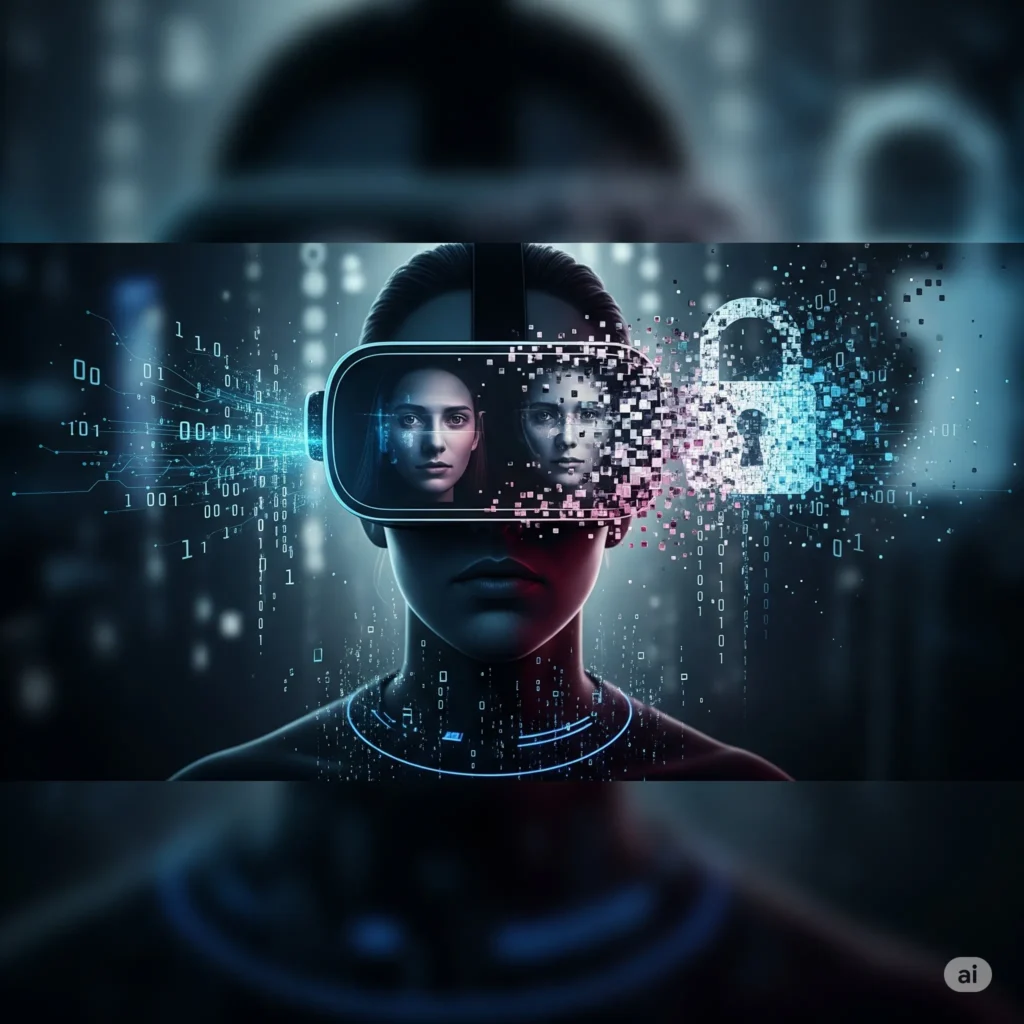
| Challenge | Real-World Impact | Solutions Needed |
|---|---|---|
| Privacy & Data | Biometric tracking (eye movements, gait) → targeted ads | GDPR-like VR regulations |
| Digital Harassment | “Virtual groping” causes PTSD-like trauma | User-controlled “safety bubbles” |
| Accessibility | $500+ headsets exclude low-income users | Phone-based AR/VR (e.g., Pico) |
| Interoperability | Can’t use VRChat avatar in Meta Horizon | Open standards (e.g., OpenXR) |
“We must design ethical norms *before* the tech outpaces our guardrails.”
VIII. The Future of Social VR
AI + VR: Your Personal World Architect
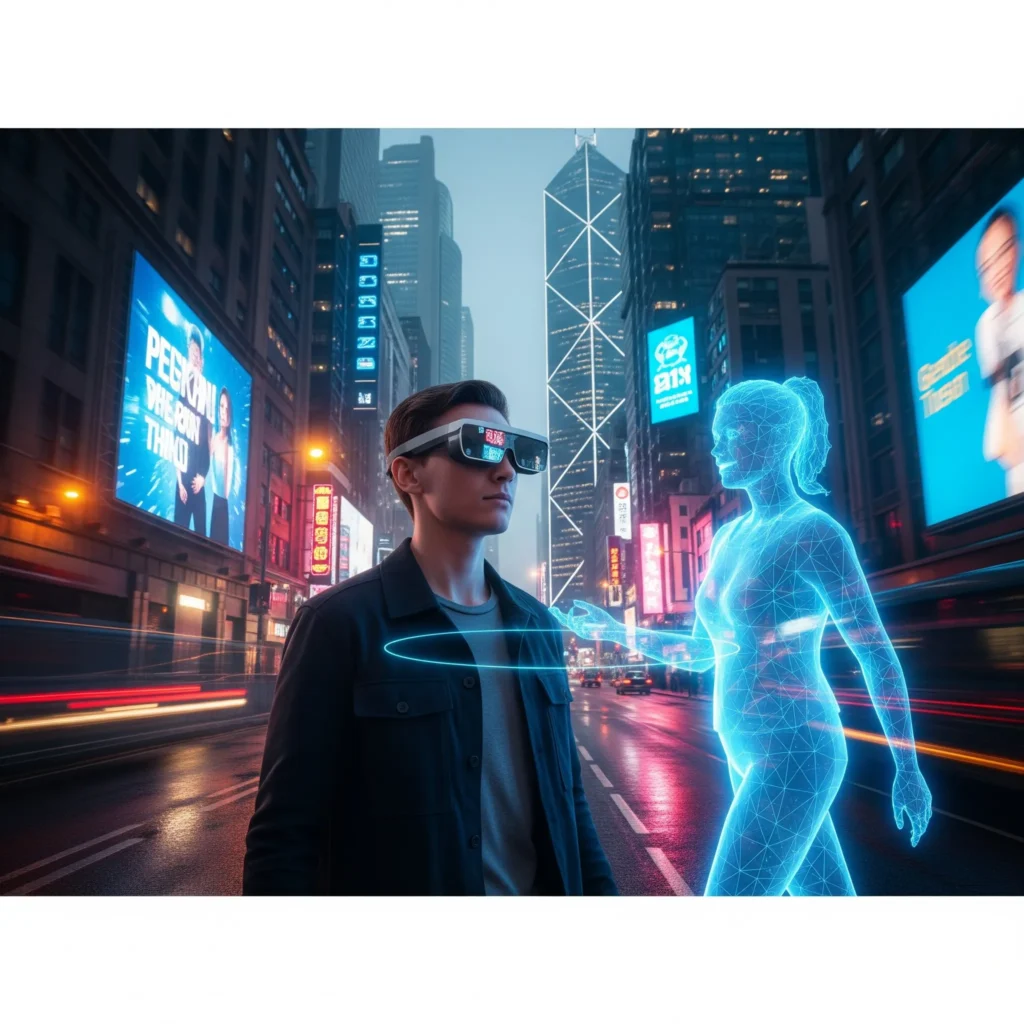
- Generative AI (e.g., ChatGPT) builds custom worlds in seconds:
- “Create a Kyoto garden with whispering pines and a tea ceremony.”
AR + Neural Integration: The Next Leap
- AR Glasses: Friends’ avatars picnicking on your physical lawn (Meta’s Project Nazare).
- Brain-Computer Interfaces (Neuralink, CTRL-labs):
- Send a “thought text.”
- Feel virtual textures via neural haptics.
🔗 Toward an Interoperable Metaverse
Your avatar, wardrobe, and digital art moving seamlessly between platforms—no more “walled gardens.” Early steps:
- Ready Player Me cross-platform avatars.
- Blockchain-based item ownership (NFT wearables).
The Big Question: End of 2D Social Media?
Unlikely to be extinction—more like fragmentation. Why scroll feeds when you can be inside them?
IX. Conclusion
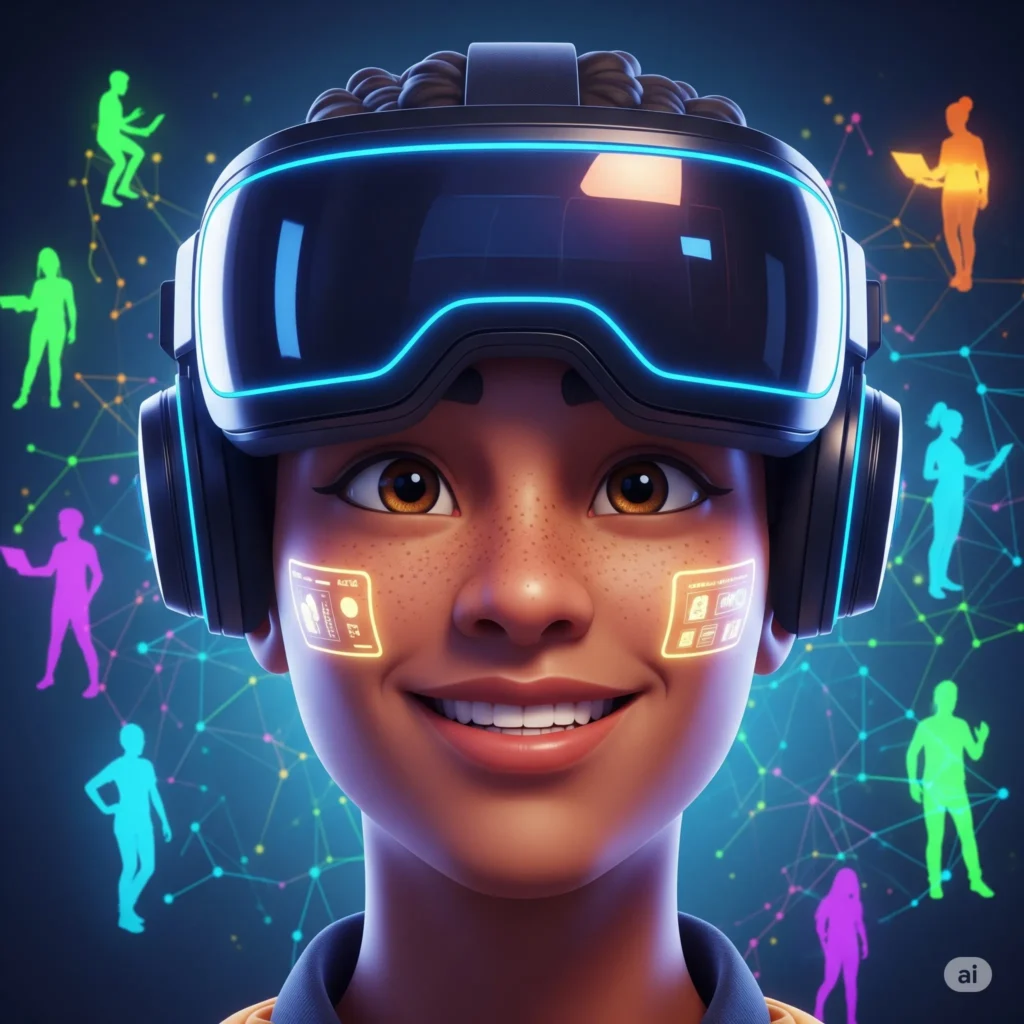
Social VR isn’t just an upgrade to video calls. It’s a fundamental rewiring of human connection, offering:
- Unprecedented intimacy across oceans.
- Revolutionary tools for work and learning.
- Inclusive spaces for marginalized communities.
Yet its success hinges on intentional design: ethical guardrails, accessibility, and human-centric experiences.
“The avatars may be digital, but the connections are profoundly real.”
Have you tried Social VR? Share your story in the comments!
X. Frequently Asked Questions

1. What equipment do I need for Social VR?
To get started, you’ll need:
- A VR headset (Meta Quest 3, Apple Vision Pro, or PC-connected devices like Valve Index)
- Minimum 10Mbps internet connection (25Mbps recommended)
- Optional: Haptic gloves/vests for enhanced immersion
Many platforms also offer desktop/mobile versions with limited features.
2. Is Social VR safe for children?
Safety varies by platform:
- Rec Room has robust parental controls and junior accounts
- VRChat has user-generated content with variable moderation
- Always enable safety features like personal bubbles and mute options
- Recommend supervision for under-13 users
3. Can Social VR help with social anxiety?
Yes, when used properly:
- Controlled exposure therapy in safe environments
- Low-pressure social practice with anonymity options
- Support groups with professional moderation
- Studies show 68% reduction in anxiety symptoms (Oxford VR trials)
Always consult a mental health professional first.
4. How much does Social VR cost?
| Component | Entry-Level | Mid-Range | Premium |
|---|---|---|---|
| Headset | Meta Quest 2 ($299) | Meta Quest 3 ($499) | Apple Vision Pro ($3,499) |
| Platforms | Free (Rec Room, VRChat) | $10-20/month (Workrooms) | Enterprise plans ($50+/user) |
| Accessories | Basic controllers (included) | Haptic gloves ($299) | Full-body tracking ($1,000+) |
5. How is VR collaboration better than Zoom?
Key advantages include:
- Spatial interaction: Walk around 3D models together
- Non-verbal cues: Natural gestures and body language
- Shared workspace: Manipulate objects simultaneously
- Enhanced focus: 40% less multitasking during meetings
6. What are the health risks of prolonged VR use?
Potential concerns:
- Eye strain (take 15-min breaks hourly)
- Motion sickness (start with short sessions)
- Disassociation effects (limit to 2hrs/day)
- Physical injury risk (clear play area)
Most effects are temporary and decrease with acclimation.
7. Will Social VR replace physical gatherings?
Unlikely – but will transform them:
- Hybrid events: Physical + virtual attendees
- Access enhancement: For remote/disabled participants
- Cost reduction: Virtual spaces for international teams
- Novel experiences: Activities impossible in physical world
Physical interaction remains irreplaceable for deep bonding.
